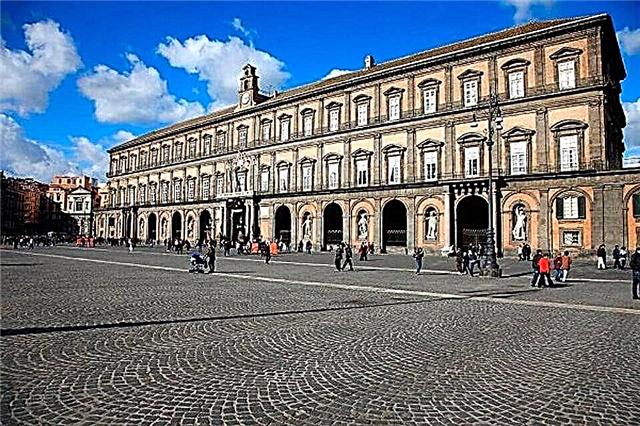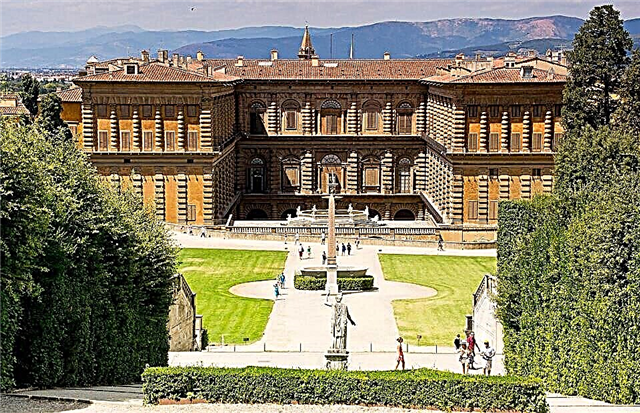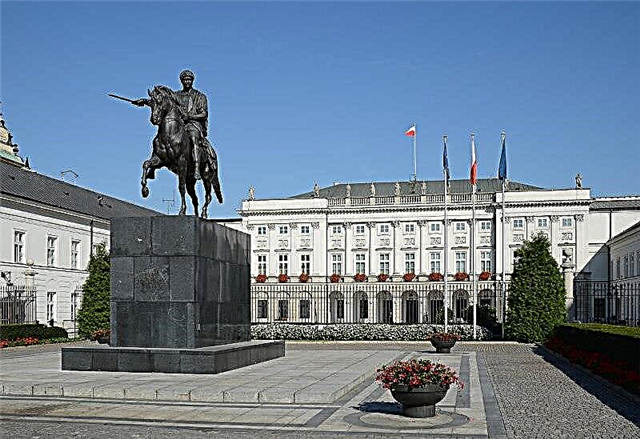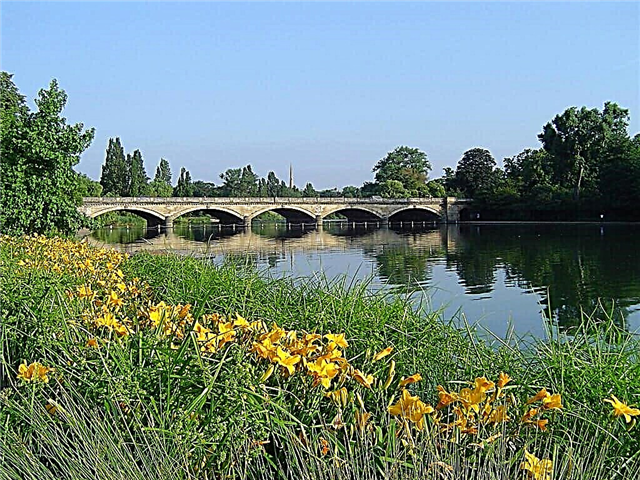One of the world's most famous parks is located in the center of the British capital, Hyde Park. A fabulous green island of nature, beautiful at any time of the year.
History
Initially, this area was a dense virgin forest, which was owned by Westminster Abbey. Then King Henry VIII seized the land for hunting grounds and for entertainment events, in which the relatives and subjects of the monarch took part.
Ordinary townspeople were allowed to visit the royal park since 1637 during the reign of James I. Over time, it became a popular place among the capital's residents - they rested here, celebrated holidays. And in 1665 the townspeople fled from the plague epidemic that broke out in London.
Each monarch who ascended the throne strove to bring something new to the look of Hyde Park. In 1728, Caroline, the wife of George II, ordered to equip the lakes, which divided the entire territory into two parts. William III ordered the construction of the Rotten Row road and the installation of more than three hundred oil lamps - this was the first road in the city and in the whole kingdom with artificial lighting. It still exists, lovers of horseback riding take walks here.

By order of Queen Victoria, the World's Fair was held in the park in 1851. The exquisite Crystal Palace was erected for the exhibition, a grandiose glass pavilion that could accommodate 14,000 visitors at a time. Unfortunately, it has not survived to this day - it burned down in 1936. Since the beginning of the 19th century, the territory has taken on a modern look, which has hardly changed until now. Occupies an area of 1, 4 sq. km.
A horse riding school is open in the park, you can rent roller skates, play bowling in a special pavilion, tennis in an open area, and organize excursions. Performances are often held by popular artists, including Madonna, the Rolling Stones, and state and religious holidays are celebrated. After walking or playing sports, it is pleasant to relax and dine in cozy cafes and restaurants - the prices are reasonable and the food is delicious.
Central Park Hotel
London
Located less than 100 meters from Hyde Park

Hotel Edward Paddington
London
Minutes from Paddington Station and Hyde Park

DoubleTree by Hilton London - Docklands Riverside
London
Located on the embankment of the Thames

Park Plaza County Hall London
London
Just minutes from the banks of the Thames and the London Eye

What to see
On the territory of Hyde-Park there is a museum and an art gallery, where modern art is presented, many interesting monuments.
The most popular objects among Londoners and visitors to the city are:
Speaker's corner

It was founded in 1872. It is considered a symbol of freedom of speech, located in the northeast of the park zone. There are always speakers here. The law does not prohibit anyone from sharing their views - discussing royals, laws, promoting the most daring ideas, talking on philosophical and theological topics. And now you can meet political groups and people who simply want to attract attention.
Lake Serpentine
Translated Serpentine means Serpentine - a reservoir of artificial origin (equipped in 1730), separates Hyde Park and Kensington Gardens. Its area is slightly less than 12 hectares. Named for its curved, serpentine shape, used specifically to create a natural look. This was an unconventional solution for the 17th century, while man-made lakes and ponds had straight lines and an elongated shape.
The tragic story made the lake more popular: Harriet Westbrook, the wife of the poet Shelley, drowned in it. The woman left a suicide note on the shore, from which it followed that it was a suicide. Probably, her husband did not grieve too much - two weeks after her tragic death, the poet married again.

Here is the expanse for lovers of water entertainment, you can combine recreation and sports - fishing, boating or catamaran, swimming, if the weather is good, just lie on the green lawns or have picnics.
In 2002, the lake hosted rowing competitions, and in 2012, during the Olympic Games, water sports competitions.
Coca-Cola London Eye Ticket - £ 24.30
Tower of London and Royal Treasure Exhibition Ticket - £ 26.80
Tower Bridge Ticket - £ 9.80
Westminster Abbey entrance ticket and audio guide - £ 20
Madame Tussauds ticket - £ 29
St Paul's Cathedral Fast Track Ticket - £ 16
Skyscraper "Shard" - entrance ticket and champagne - £ 24.95
Pet cemetery
Not very well known even among the locals. They began to bury pets in London in 1881, the last burial dates back to 1903. Cherry the dog, a Maltese terrier belonging to the Barned family, was the first to be buried here. After the death of the dog, the Barned children persuaded the doorkeeper to allow their pet to be buried in his garden. Then the dog of the Duke of Cambridge's wife died under the wheels of the carriage - this was the second burial.

A year later, almost the entire garden of the gatekeeper was occupied by graves - only about 300 pieces. The gravestones have survived to this day. This gloomy, but picturesque place is a closed territory; everyone is allowed here only once a year.
Monuments
All Hyde Park memorials cannot be viewed in a day, the most popular with visitors:
Statue of Achilles - dedicated to the victory over Napoleon's army. This is the largest monument in the park, established in 1822. To create it, the cannons captured by Wellington's army in the campaign against Napoleon's Bonaparte were melted down.
The figure of Achilles is made in the form of a naked man, many Londoners, distinguished by stiffness, were actively outraged about this. But the sculpture was defended, the passions subsided and now people can admire it.

Diana Memorial Fountain - in memory of the Princess of Wales (died in a car accident in Paris in 1997). The fountain is a unique structure, which was personally opened by Elizabeth II on July 6, 2004. Designed by renowned landscape designer Catherine Gustafson, it took 545 blocks of Cornwall granite to complete.
The symbolic structure embodies the life of the Princess of Wales and is made in an unusual shape - two troughs measuring 50 x 80 m, connected into an oval. Streams of water rush along the gutters towards each other. On the east side, gentle steps and water flows slowly - the personification of a calm part of life, on the west - the water stream looks like a fast and stormy river, symbolizing hard times and the sudden ridiculous death of the princess. The passage of water streams is carried out on three bridges, the fountain is fed by the groundwater of London. Diana was highly respected by locals and people around the world thanks to the help she always provided to sick and disadvantaged people.

The July 7 monument is dedicated to people who died during terrorist attacks. There was a tragedy in 2004 in the capital's metro. Made in a minimalist style - 52 rectangular stainless steel columns installed vertically.
In the eastern part of Hyde Park, there are several unusual fountains and statues. They were made in the sixties of the XX century. One composition is called "Stagnant Water" - it depicts the huge head of a horse leaning towards the water to drink.
Not far away one could see the equestrian statue of "Genghis Khan", cast from bronze. It was created in 2012 by the Russian sculptor Namdakov. A few years later, it was replaced by the composition "Guardian" by the same sculptor - a mystical cat with wings, protecting cubs.
Among the best is a monument to animals that took part in the First World War.The appearance of such a memorial is not surprising - the British are passionate lovers of horses, dogs and cats. The exhibition was opened in 2004 by Anna, the daughter of the Queen of England, and the Springer Spaniel dog Buster, a participant in the Iraq War. The dog was awarded the Maria Deakin Medal, the highest military award for animals for the courage she showed in performing important and dangerous tasks.
Animals participated in wars in antiquity, only in the First World War, 8 million horses, donkeys, dogs, pigeons died. Grateful Londoners sculpted a monument from Portland stone (sculptor Backhouse). In the center of the composition is a wall with a symbolic image of military operations, in which an elephant, a camel and a horse participate. Bronze mules are heading towards her, heavily laden.
A part of the wall is torn apart, behind it are also visible a bronze horse and a dog - they are already in a “better world”. A touching exhibition imbued with love and admiration for faithful animals.
Bronze sculpture "Isis", made in the image of the goddess of motherhood, who took the form of a bird.
The park has an art gallery - Serpentine, which presents unique exhibits created in the XX-XXI centuries.
Wellington arch

The elegant and majestic Wellington Arch, also called the Arch of the Constitution. It was erected by order of George IV to commemorate the defeat of Bonaparte's troops by the British army in 1825. The project is in the style of classicism by the architect Burton.
In 1846, the Arch was crowned with a statue of the Duke of Wellington, the work of the sculptor White. It was considered the largest equestrian statue (height 8.5 meters). In the eighties of the XIX century, it was moved, it was required for the redevelopment of the road, now the structure is located on a “safety island” for pedestrians.
In 1912, the statue of the duke was replaced by a sculptural composition - a bronze angel of peace, ruling a quadriga, descends from heaven. Interestingly, in the building of the Arch until 1992 there was the smallest police station in the capital. Currently, there is a museum on three floors. It contains exhibits that tell about the history of this place. There is a terrace upstairs with great views.
Part of the arch works as a ventilation shaft for the London Underground, the city's fire departments often receive signals that the structure is on fire. But these are dusty streams of air escaping from the mine.
Where is it located and how to get there?
Hyde-park is located in London, next to Kensington Gardens. Open from 05:00 to 24:00.
You can get there by bus, routes: 2.6, 7, 8, 9, 10, 14, 22, 36, 38, 52.73, 74, 137, 148, 274, 390, 414, 436. By subway to the stations: Lankaster Gate, Marble Arch, Hyde Park Corner, Knights bridge.
Hyde Park is an oasis of calm and peace. A favorite place for walks, sports, celebrations and sightseeing. If you need privacy, you can find a quiet and picturesque place. Anyone will find it interesting and comfortable here.











